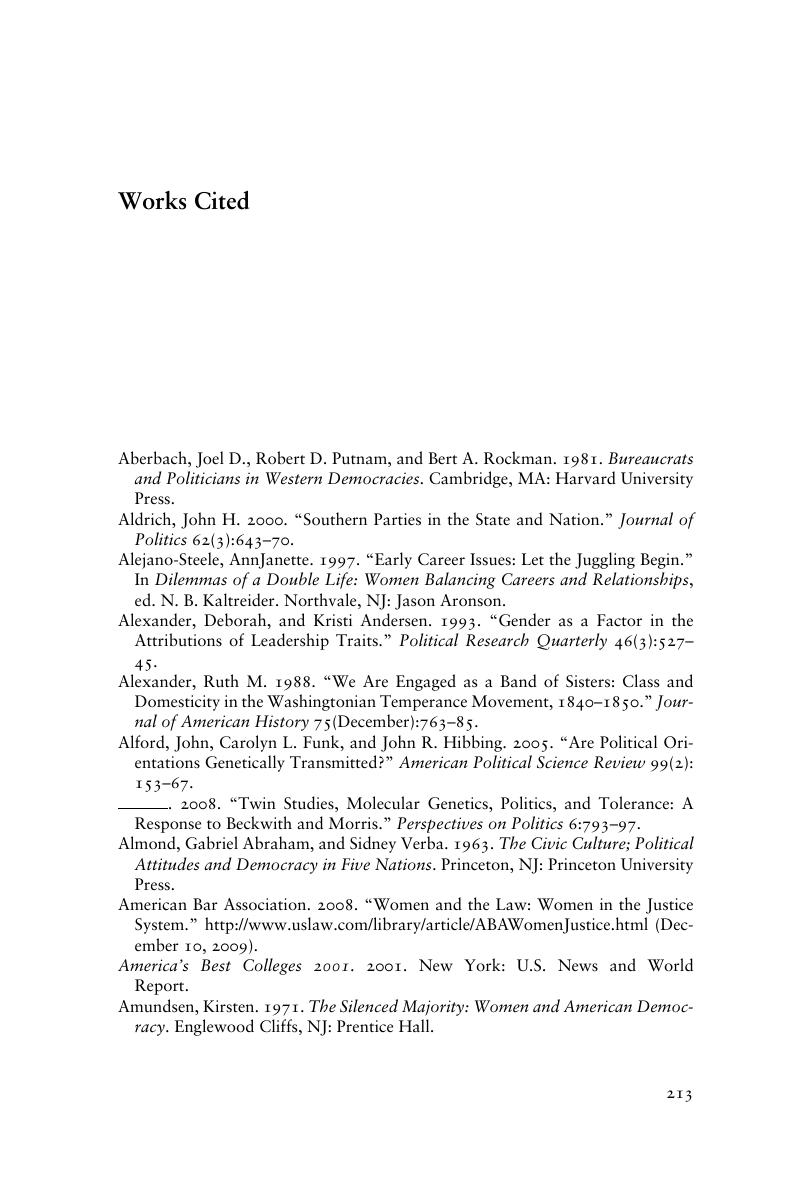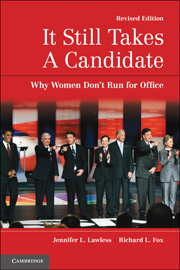Book contents
- Frontmatter
- Contents
- List of Tables
- List of Figures
- Acknowledgments
- 1 Electoral Politics
- 2 Explaining Women's Emergence in the Political Arena
- 3 The Gender Gap in Political Ambition
- 4 Barefoot, Pregnant, and Holding a Law Degree
- 5 Gender, Party, and Political Recruitment
- 6 “I'm Just Not Qualified”
- 7 Taking the Plunge
- 8 Gender and the Future of Electoral Politics
- Appendix A The Citizen Political Ambition Panel Study Sample Design and Data Collection
- Appendix B The First-Wave Survey (2001)
- Appendix C The Second-Wave Survey (2008)
- Appendix D The Interview Questionnaire
- Appendix E Variable Coding
- Works Cited
- Index
- References
Works Cited
Published online by Cambridge University Press: 05 June 2012
- Frontmatter
- Contents
- List of Tables
- List of Figures
- Acknowledgments
- 1 Electoral Politics
- 2 Explaining Women's Emergence in the Political Arena
- 3 The Gender Gap in Political Ambition
- 4 Barefoot, Pregnant, and Holding a Law Degree
- 5 Gender, Party, and Political Recruitment
- 6 “I'm Just Not Qualified”
- 7 Taking the Plunge
- 8 Gender and the Future of Electoral Politics
- Appendix A The Citizen Political Ambition Panel Study Sample Design and Data Collection
- Appendix B The First-Wave Survey (2001)
- Appendix C The Second-Wave Survey (2008)
- Appendix D The Interview Questionnaire
- Appendix E Variable Coding
- Works Cited
- Index
- References
Summary

- Type
- Chapter
- Information
- It Still Takes a CandidateWhy Women Don’t Run for Office, pp. 213 - 230Publisher: Cambridge University PressPrint publication year: 2010

